Doraemi House / 도래미하우스
17.1Km 2025-08-12
18-26, Dongnyeok-gil, Dado-myeon, Naju-si, Jeollanam-do
+82-10-8616-6725
Doraemi House is a hanok stay type of tourist accommodation located in the village of Dorae, Naju City, Jeollanam-do Province. The house was named Doraemi, meaning “the beauty (mi) of Dorae”, in the hope of conveying the beauty of the village. The accommodation consists of three hanok structures - the Bonchae, Sarangchae, and Byeolchae. The Bonchae consists of two bedrooms with a garret; the Sarangchae has 2 bedrooms flanked by a living room; and the Byeolchae, located on a hill, is a cozy single room, with a wooden swing placed in front of the building. Doraemi House is decorated with cozy, natural items that create a relaxing atmosphere. A pleasant forest trail passes by the house and leads to Gyeeunjeong Pavilion, one of the village’s three pavilions, and a small pond. The owner of the house has established a small reading space filled with picture books next to the Bonchae building, where guests can enjoy reading amid a tranquil atmosphere.
Sane Flower [Korea Quality] / (주)산에는 꽃이피네 [한국관광 품질인증]
17.1Km 2020-09-03
20-1, Dongnyeok-gil, Dado-myeon, Naju-si, Jeollanam-do
+82-10-4612-4232
‘Flowers Blossoms in the Mountains’ is a hanok-style accommodation located between the House of Hong Gi-chang, a local cultural heritage, and Gyeeun Historic House (or the House of Hong Gi-eung; National Folklore Cultural Heritage No. 151) in Dorae Hanok Village. Built in 1917, the house was built with carefully selected high-quality wooden materials without using nails. It was renovated for use as tourist accommodation in 2011, opened as a hanok style of accommodation in 2013, and renovated again in 2014. On this occasion, the old doors were replaced and made into the tables that stand in the grassy courtyard.
The house has a total of 4 rooms. Each room can accommodate up to 2 to 4 people. Each room is equipped with a kitchen, bathroom, air-conditioner, TV, toiletries, plates, and so on.
This well-insulated hanok house is decorated with hanji (traditional Korean paper handmade from mulberry tree) and various antique items. Tables are available for guests in the courtyard, of which a stylish stone-paved corner stands out in particular.
There is a walkway established by Naju City in front of the house, and a vegetable garden near the house. Guests can see gourds and sponge gourds in the yard and acorn trees on the hill behind the house. In addition, the Metasequoia Street that runs through the grounds of the Naju Forest Resource Institute is just one minute’s drive from the house.
Moreover, as the village contains many houses that are classed as cultural heritages, the owner guides guests around them at weekends. Surrounding tourist attractions include Bulhoesa Temple and Najuhyanggyo Confucian School.
Changpyeong [Ville Lente] à Damyang (전남 담양 창평 [슬로시티])
17.2Km 2021-07-23
56-24, Doldam-gil, Damyang-gun, Jeollanam-do
+82-2-383-3807
Changpyeong-myeon est une belle région agricole où il fait bon vivre. Les industries suburbaines de tomates, fraises et légumes y sont bien développées et les environnements naturels ont été remarquablement conservés. Cet endroit à un gros potentiel. Le nom, Changpyeong est utilisé depuis la Dynastie Goryeo et elle fut célèbre pour les venues des officiels du gouvernement loyaux envers la nation, les parents et la courtoisie. Les bonbons et sucreries de Changpyeong à base de riz qui furent présentés aux rois de la Dynastie Joseon, le sel de bambou de plus de mille ans de mystère, la pate d’haricot et le traditionnel tteokgalbi ne sont pas simplement des aliments traditionnels mais aussi ce pour quoi Changpyeong est fière.
* Histoire
Nommée Gugyeguk durant la Période Samhan.
Nommée Guljihyeon durant la Période Baekjae.
Nommée en 757 Giyanghyeon durant la Période Shilla.
Nommée en 940 Changpyeonghyeon durant la Période Goryeo et le corps principal du gouvernement, le Hyeonryeong, fut établit en 1144.
Pendant la Période Joseon, en 1479 (5ème année du règne du Roi Seongjong), Changpyeonghyeon fut deplacée et assujettie à Gwangjumok. En 1758 (34ème année du règne du Roi Yeongjo), Min Baek Rok compila les journaux de Changpyeonghyeon et en 1793 (17ème année du règne du Roi Jeongjo), le magistrat du district de Changpyeonghyeon, Jo Gwang Jon bougea de Goseo-myeon, Goeup-ri à Changpyeong-myeon, Changpyeong-ri, 82-bunji. Le 26 mai 1895, elle devint Namwon-bu, Changpyeong-gun. Le 24 août 1896, elle devint Jeollanam-do, Changpyeong-gun et possède désormais 9 districts.
Sous l’occupation japonaise, en 1910, elle fut Changpyeong-gun et le 28 février 1914, en accord avec l’ordre ministériel numéro 11, elle fut incorporée à Damyang-gun et fut renommée Changpyeong-myeon.
※ Il existe une théorie disant que Changpyeong fut nommée d'après Changpyeonghyang (lieu de naissance de Confucius) en raison de ses similarités géographiques.
Le 1er avril 1990, Nam-myeon Oedong-ri fut incorporée à Changpyeong-myeon.
Cimetière national 5.18 (국립 5.18 민주묘지)
17.4Km 2024-10-25
200, Minju-ro, Buk-gu, Gwangju
+82-62-268-0518
Situé à portée de vue de Mudeungsan, le cimetière 5.18 héberge les corps des manifestants de mai 1980. C’est un lieu symbole de la liberté et de la démocratie. Les corps des manifestants, livrés par chariots et camions de nettoyage, ont été enterrés en premier lieu au cimetière de Mangwol-dong. Après la réévaluation de la manifestation de mai pour la démocratie, la construction d’un nouveau cimetière fut décidée. Les travaux s’achèvent en 1997 et les corps y furent deplacés. Le 18 mai est finalement devenu un jour de commémoration nationale. Pour accéder au cimetière, il faut tout d’abord passer la Porte de la Démocratie, monument de style traditionnel, puis la Place de la démocratie, pour arriver enfin à Chunyeommun la porte de la commémoration. Un peu plus loin, se trouve, haute de quatre mètres, la Tour de la Commémoration représentant des mains jointes pour la prière, elle est un symbole de résurrection pour une nouvelle vie. En bas de la tour, se trouve un autel avec ses porte-enscens pour commémorer les morts. Après avoir passé la tour, se trouvent sur la droite et la gauche des reliefs qui décrivent des scènes de la manifestation. Un peu plus à droite, se trouve un monument commémoratif reprenant la forme de dolmen des anciennes tombes traditionnelles, ayant fonction d’autel il abrite les portraits et les tablettes mortuaires des victimes de la manifestation. En face, la Porte de l’Histoire présente images et documents du 18 mai.Le Cimetière 5.18 est un endroit indiqué pour comprendre l’histoire moderne de la Corée. Les alentours du cimetière permettent à l’occasion de faire une promenade agréable.
Gotaekhanok / 고택 한옥에서
17.5Km 2025-08-12
88-9, Doldam-gil Changpyeong-myeon, Damyang-gun, Jeollanam-do
+82-61-382-3832
Hanok Pension is an old traditional Korean house located in Samjinae Village, Changpyeong-myeon, Damyang-gun, the first village in Asia to be listed as a 'Slow Village.' It has 15 guestrooms in traditional Korean house buildings along a stone-wall road just like in the old days in Korea. The guesthouse is conveniently located for those planning to visit Juknokwon (Bamboo Garden) and Metasequoia Street, which is regarded as the most beautiful street in Korea, because they are all within 30 minutes away from the guesthouse on foot. The old traditional Korean house consists of one main building and two detached buildings, between which is a large front yard. The two detached buildings are divided into different sections for the guests to stay in. You will see lots of different wild flowers in and around the premises. The tea room is another popular feature of the guesthouse because of the calming atmosphere.
Village Changpyeong Samjinae à Damyang (담양 창평 삼지내마을)
17.5Km 2020-04-28
56-24, Changpyeong-myeon, Damyang-gun, Jeollanam-do
+82-61-383-3807
Le village de Changpyeong Samjicheon (Samjinae), fondé aux alentours de 1510, est entouré par le mont Wolbongsan à l’Est et par le pic de Gukjubong au Sud. Le nom du village, Samjicheon(nae), vient de la forme de la rivière qui coule devant le bourg, qui forme les contours d’un phoenix embrassant le village de ses ailes déployées. Situé au milieu d’une terre fertile, le village a longtemps été réputé pour l’abondance de ses produits fermiers. Il abrite de nombreux monuments culturels et hanoks traditionnelles, comme la maison Damyang Gojaeseon qui a été désignée Bien Folklorique n° 5. La route en S qui traverse le village permet aux visiteurs de se promener tranquillement parmi les maisons hanoks d’une authentique valeur traditionnelle.
Gwangju Family Land (광주패밀리랜드)
17.5Km 2024-12-17
677, Uchi-ro, Buk-gu, Gwangju
+82-62-607-8000
Le Familly Land à Gwangju est un parc situé près du
centre-ville à Buk-gu, Gwangju-si. Ce parc abrite une piscine, une patinoire,
de zones de jeux, etc. En 2002, une salle de tennis mais aussi un terrain de
golf ont été rénovés afin que le public de tout
âge puisse profiter des activités offertes par le parc.
Dasomchae [Korea Quality] / 다솜채 [한국관광 품질인증]
17.7Km 2023-04-13
27, Naesang-ro 51beon-gil, Gwangsan-gu, Gwangju
+82-10-8427-0505
Built more than 80 years ago, Dasomchae is a 'hanok (traditional Korean house)' guesthouse located in Songjeong-dong, Gwangju-si. It has 12 guestrooms whose walls are covered with healthy, natural red clay. The blankets are filled with natural cotton for a good night's sleep. There are lots of grapevines and trees in the front yard, including yew, locust, Japanese angelica, pomegranate, jujube, and apricot trees. In summer, the chimney is covered with trumpet flowers, making for a picturesque view. There is also a Korean A-frame that has actually been used for decades. Located a mere 10 minutes away by car from Songjeong Station, the guesthouse is very conveniently located for those wishing to visit various tourist destinations in the city.
Songjeong Tteokgalbi - 1st branch (송정떡갈비 1호점)
18.0Km 2020-02-21
1, Gwangsan-ro 29beon-gil, Gwangsan-gu, Gwangju
+82-62-944-1439
Songjeong is famous for its tteokgalbi (grilled short rib meat patties), which is one of the five must-eat food of Gwangju. There are many tteokgalbi restaurants around Gwangsan district office, but Songjeong’s history goes back to 1976 and making it the original store.
A good tteokgalbi is made by mixing the meat of beef short ribs and pork bone ribs in a one-to-one ratio and adding acacia honey to make the meat both tender and chewy. The dish is also reasonably priced. The secret to the delicious meat is the sauce, which is made with about 20 natural ingredients like kelp, radish, and green onion and no artificial seasonings. Also a pride of the restaurant is the broth made from pork bones which comes with the tteokgalbi.
Rue des plats tteokgalbi à Gwangju (광주 송정동 떡갈비 골목)
18.0Km 2023-11-16
Gwangsan-ro, 29 Beon-gil, Gwangsan-gu, Gwangju
On trouve dans le quartier de Songjeong à Gwangju une rue consacrée au plat tteok galbi. Il s'agit d'un endroit très prisé des habitants de ville pour l'excellence des plats servis tteok galbi. Ce plat a la particularité ici d'être préparé non seulement avec de la viande de boeuf mais aussi de la viande de porc.
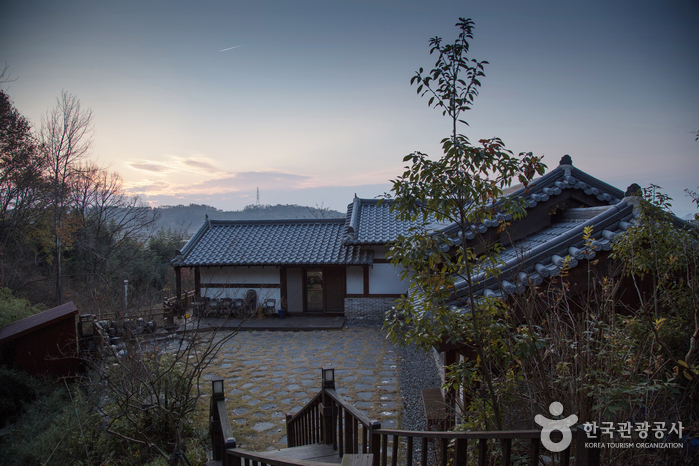
![Sane Flower [Korea Quality] / (주)산에는 꽃이피네 [한국관광 품질인증]](http://tong.visitkorea.or.kr/cms/resource/98/2574998_image2_1.jpg)

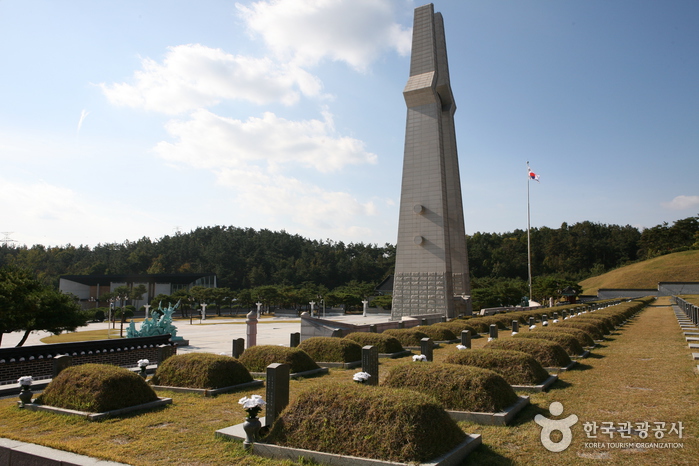
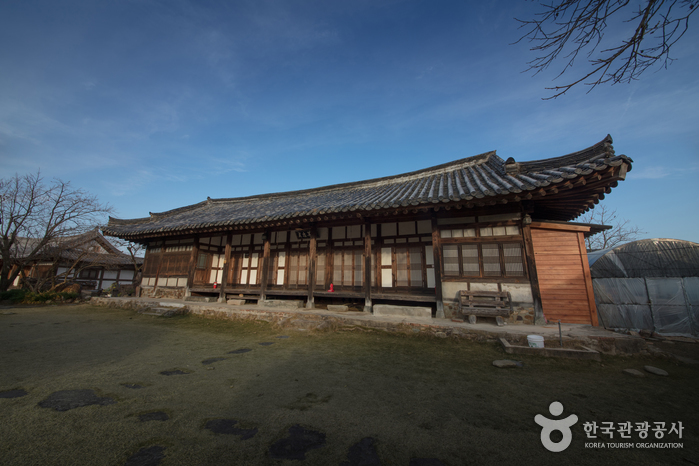
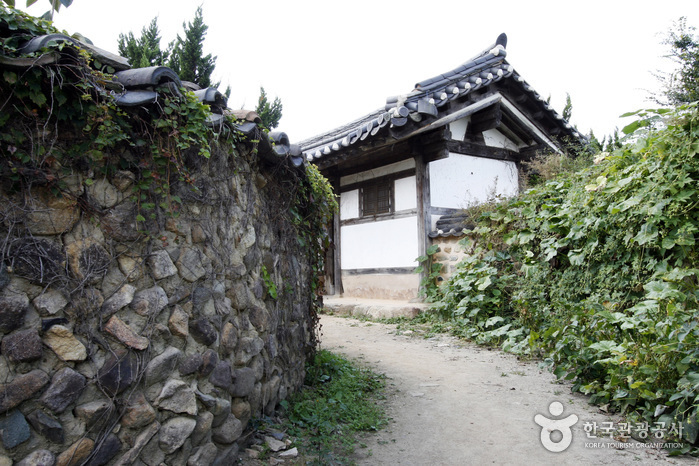
![Dasomchae [Korea Quality] / 다솜채 [한국관광 품질인증]](http://tong.visitkorea.or.kr/cms/resource/93/2528293_image2_1.jpg)
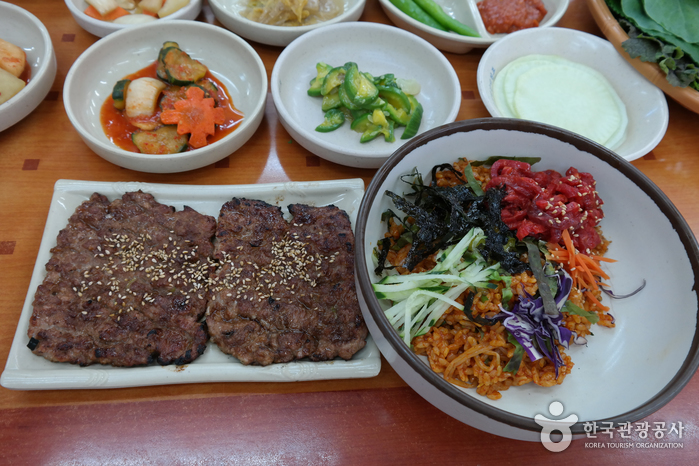
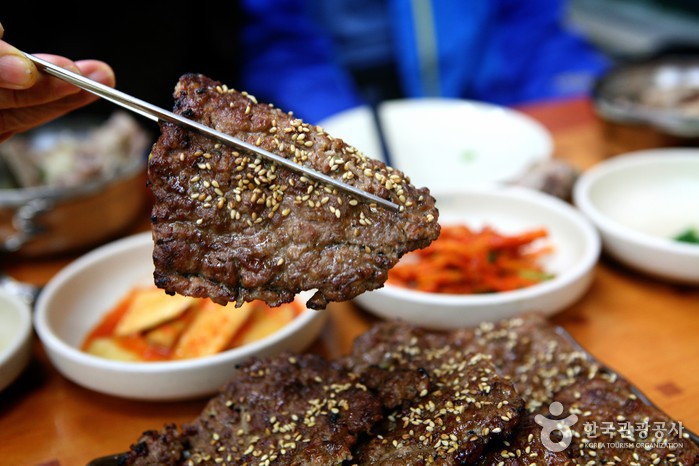
 Français
Français
 한국어
한국어 English
English 日本語
日本語 中文(简体)
中文(简体) Deutsch
Deutsch Español
Español Русский
Русский